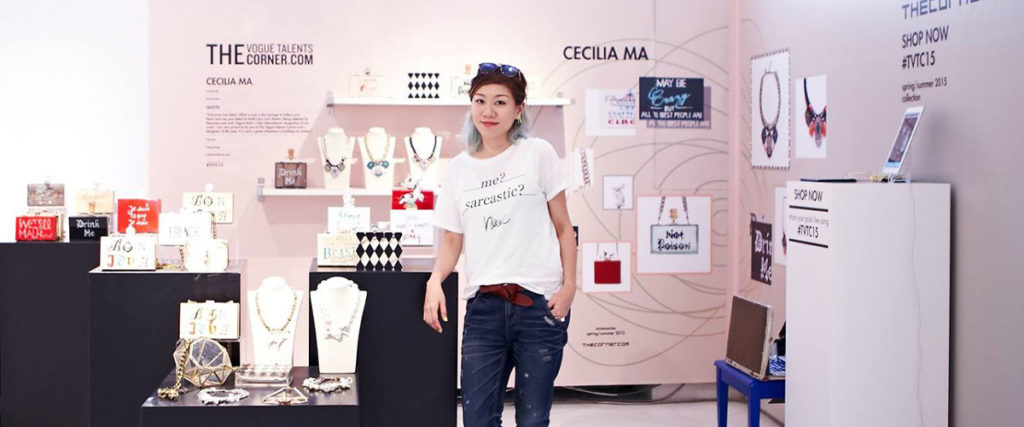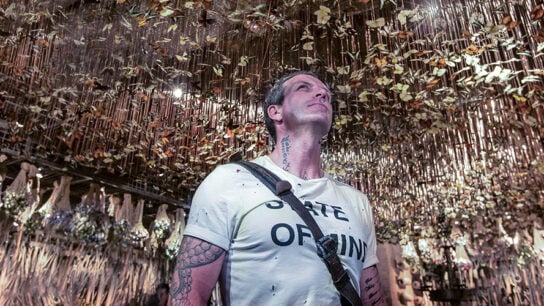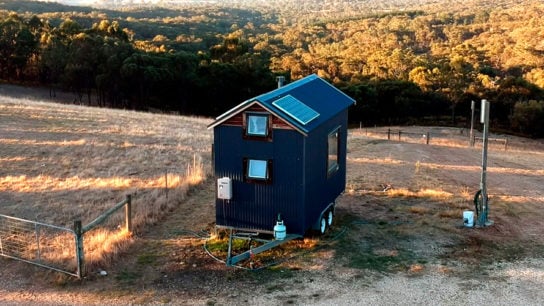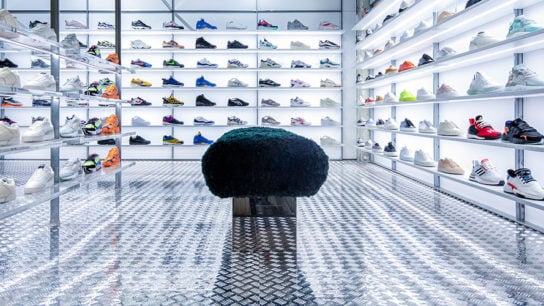What does it take for a local fashion brand to find success on the global stage? Hong Kong-based independent handbag designer Cecilia Ma tells us how she made her vision a commercial reality in an age of fierce competition.
In an increasingly crowded space and competitive retail market, it has become more and more difficult for startups and independent designers to succeed in the fashion business. Hong Kong accessories and handbag designer Cecilia Ma, however, is one of her sector’s successes. Starting her namesake brand out of a small shop in Kowloon Tong in 2011, she now runs her venture from Hong Kong’s artsy PMQ complex, having built her one-woman show from scratch to one with over fifty retail outlets across twenty cities in five continents. Known for her funky handbags, you can find her products in top luxury department stores such as Isetan, Lane Crawford and Harvey Nichols, sold alongside the likes of Céline and Prada. She sat down with Hive Life to tell us how she got them there.
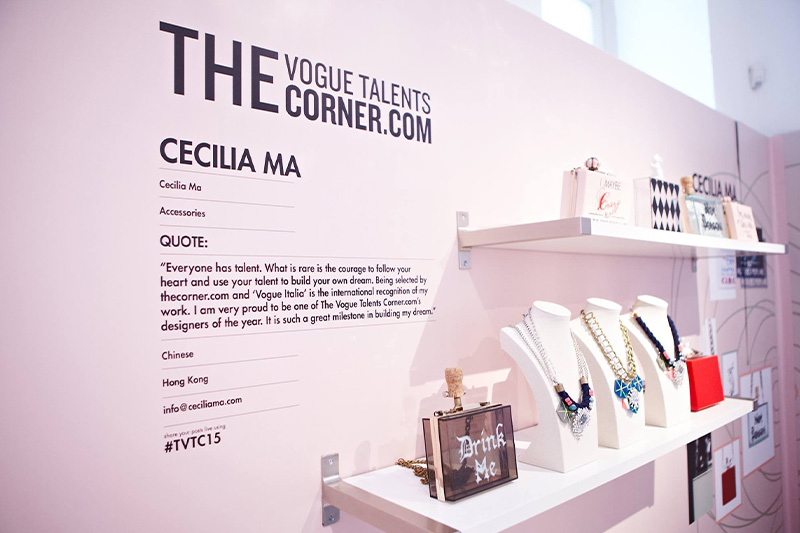
A graduate of The Hong Kong Polytechnic University School of Design, Cecilia says she has always had “an obsession with making things”. A budding fashion designer since the age of 12, she discovered her passion for handbags by chance, making one for herself as an experiment. “I like drawing, not surprisingly. But I also like to play around with different materials. I’ve drawn on wood, on plastic, and then on clutches. The first clutch I ever drew on was for myself,” she recalls.
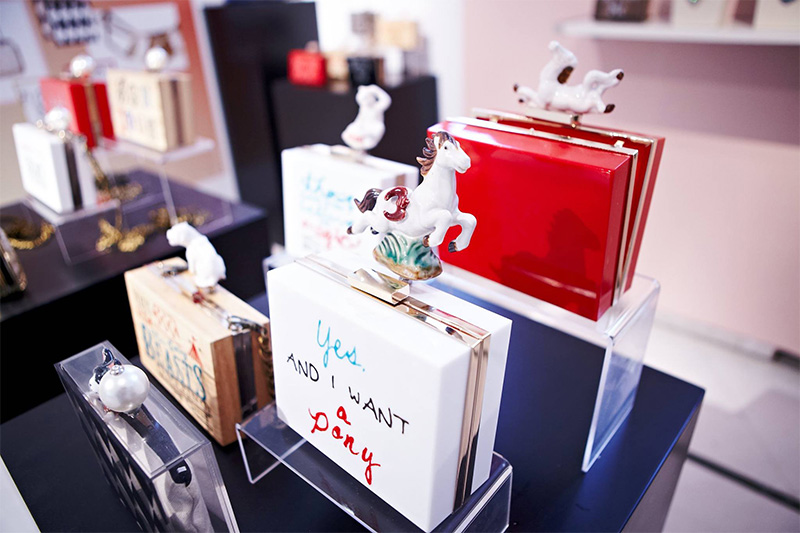
Now, she’s built a brand off the back of her distinctive clutch bags which come in her signature small, box-like style, each of which take up to two weeks to make. Informed by the designer’s sense of humour and maverick personality, she develops collections with whimsical themes – think ‘anti-social’ and ‘carnival.’ Adorned with bold messages like ‘better late than ugly’, ‘allergic to work’, and ‘stop and smell the rosé,’ the bags, which range from HKD 1500 to HKD 3000, make not only a visual but also a verbal statement.
It’s thanks to those attention-grabbing statements that Cecilia has built a business with traction. Having launched her business in 2012, her bags quickly found resonance among the Instagram generation. Soon, what started out as a fun experiment snowballed into five full-blown collections that catapulted the independent brand into the limelight, scoring Cecilia multiple awards, placing her in VOGUE TALENTS 2015 and as Lane Crawford’s The Next New, 2016 along the way.
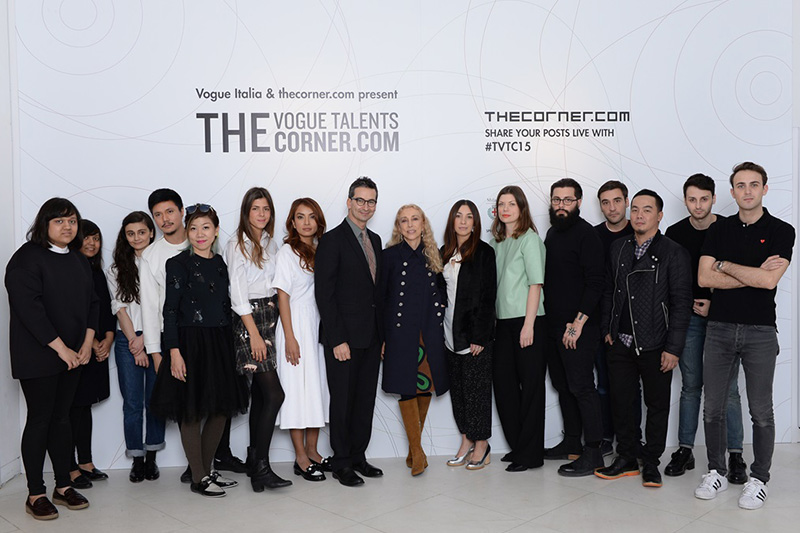
Cecilia puts her success in breaking into the increasingly cluttered fashion landscape down to her brand’s niche focus – what she sees as a rare sweet spot where there is growing consumer demand and not much competition. “The fashion market is saturated with ready-to-wear products, but not many are doing statement clutches. So, this segment of the market is relatively less competitive,” she explains. In addition, she sees a shift in mentality when it comes to luxury that has contributed to the rising popularity of independent brands. “A decade ago, luxury was defined by exclusivity, which is achieved through a high price point. That’s why people would want to invest in an Hermes Kelly Bag,” says Cecilia. However, as high-end products have become more and more ubiquitous, their exclusivity has diminished. “Now, people have eschewed established labels in favour of lesser-known brands for a higher degree of personalisation and exclusivity that current designer handbags fail to provide,” the designer continues.

Cecilia may have seen a clear niche, but that doesn’t mean filling it was easy. Getting her brand off the ground took determination – particularly when it came to production. “Manufacturers refused to take our orders because producing hand-drawn details is time-consuming and far less profitable than manufacturing handbags with digital printing,” she says. “We had no choice but to do them ourselves. In retrospect, that actually helped our brand take off because we were able to have tighter control over the quality of our own products.”
With its distinctive design and accessible price point, Cecilia’s 7-year-old brand has earned a loyal fan base across Europe and the Middle East, which, together, account for about 70 per cent of Cecilia’s business. But she’s at pains to point out, it’s taken perseverance to get there. “In fashion, it takes time to be where you want to be. So, don’t be put off when you don’t get the ideal reception from the market during the first few years. Be proactive in seeking out potential customers through social media and trade shows, even when you’re not sure what will happen. Deals and recognition often come at the most unexpected time.”
